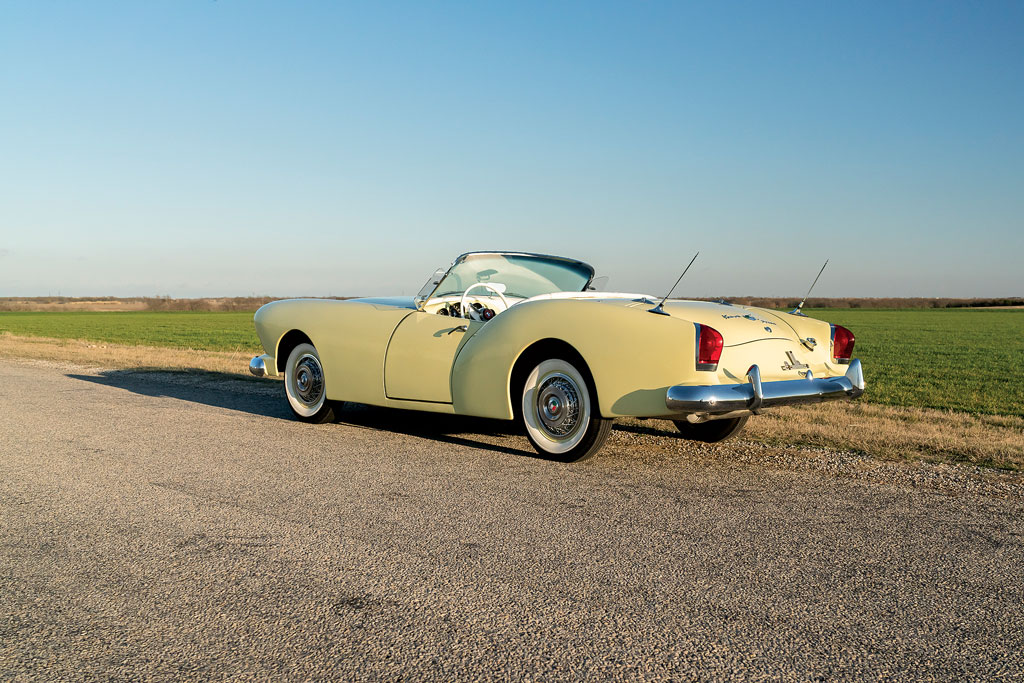Chassis Number: 161001390
The Kaiser-Darrin was America’s first production fiberglass sports car, with its prototype debuting in fall 1952 — just ahead of the Chevrolet Corvette (although production did not begin until 1954). It was powered by the reliable Willys 161-cubic inch “Hurricane” F-head 6-cylinder engine, and its design became a legend of 1950s motoring, with sweeping front fenders that plunged behind the doors into a “Darrin dip,” a split windshield, and a distinctive “rosebud” grille, which, it was commented, always looked like it wanted to give someone a kiss.
With only 435 production examples completed, the Kaiser-Darrin is an uncommon offering by any measure. The roadster offered here is a very late-production car, number 390, originally finished in Yellow Satin. After being treated to a body-off, professional rotisserie restoration in the original color, it presents beautifully, and it is further enhanced by a few rare accessories. The car also features correct chrome wire-wheel covers and wide whitewall tires.
This is a rare opportunity to acquire a well-accessorized and beautifully restored Darrin in very attractive colors, sure to make its new owner feel like a 1950s film star!

